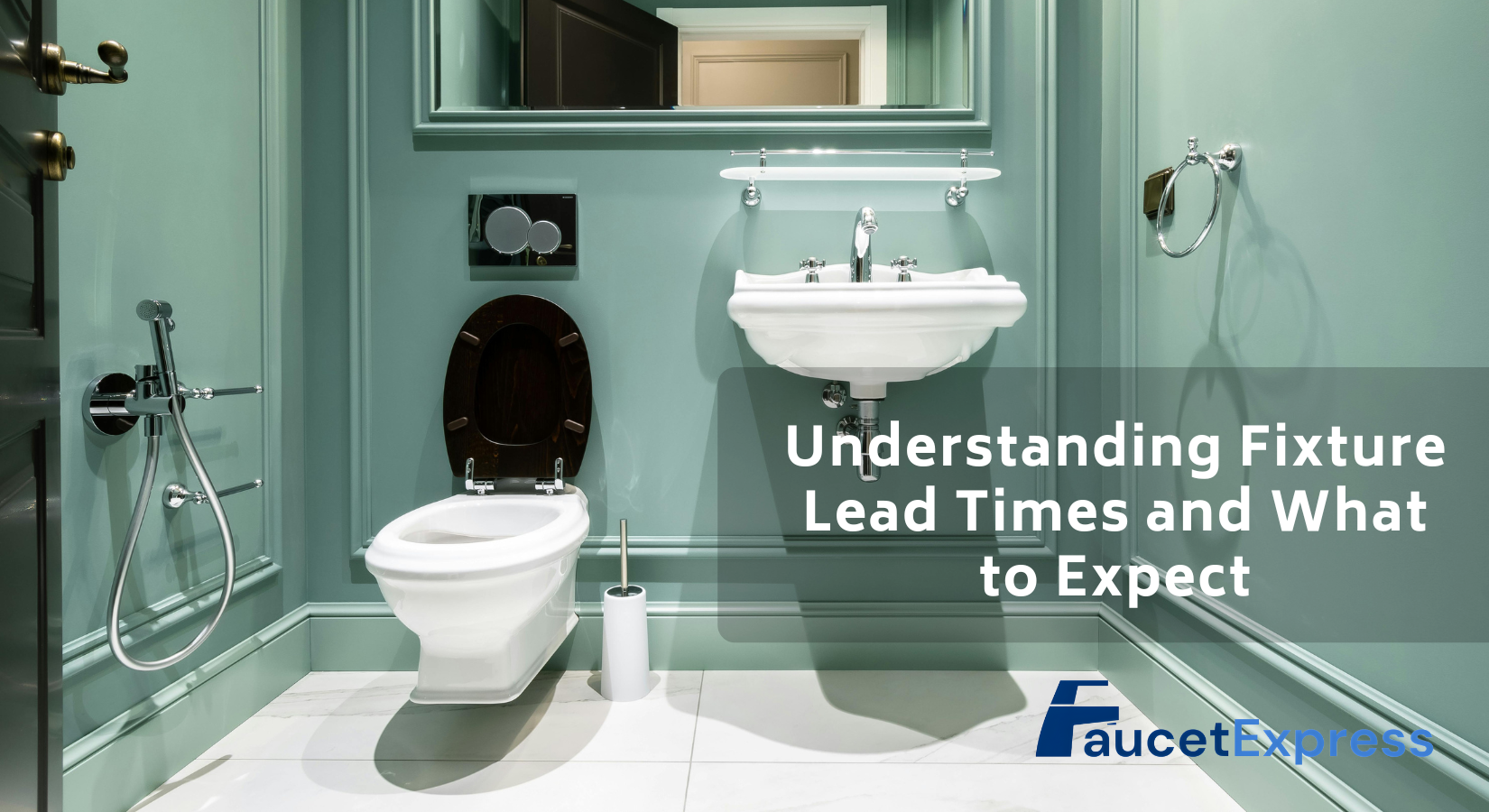When planning a renovation or home improvement project, selecting the right fixtures is only half the battle. Understanding fixture lead times is critical to ensuring your project stays on schedule. Whether you're upgrading a bathroom, remodeling a kitchen, or building a new home, knowing how lead times work can save you from costly delays and frustration. Here's a thoughtful guide to help you navigate fixture lead times and manage your expectations effectively.
What Are Fixture Lead Times?
Fixture lead times refer to the period between placing an order and receiving the product. This timeframe can vary significantly depending on factors like the type of fixture, supplier location, and customization options. Understanding these timelines allows you to plan your project more effectively, ensuring that your fixtures arrive when needed and your workflow remains uninterrupted.
Factors That Affect Fixture Lead Times
Several variables influence lead times, and being aware of them can help you make informed decisions:
1. Product Type
● In-Stock Fixtures: Items readily available in warehouses typically ship within days. These are ideal for quick projects or replacements.
● Custom Fixtures: Made-to-order products, such as custom finishes or sizes, can take weeks or even months to manufacture.
● Specialty Items: High-end or niche fixtures often require longer lead times due to limited availability or specialized production processes.
2. Supplier Location
● Domestic Suppliers: Fixtures from local or national suppliers usually have shorter lead times due to reduced shipping distances.
● International Suppliers: Imported fixtures may take longer due to international shipping, customs clearance, and other logistical challenges.
3. Demand
● Seasonal Peaks: Lead times often increase during peak renovation seasons (spring and summer) when demand is higher.
● High-Demand Products: Popular fixtures or those trending in design can experience stock shortages, extending lead times.
4. Supply Chain Disruptions
Unpredictable events such as material shortages, shipping delays, or global supply chain issues can impact lead times, even for in-stock items.
How to Plan Around Lead Times
Proactive planning is essential to avoid delays and ensure a smooth project timeline. Here are some practical tips:
1. Start Early
As soon as you finalize your design and budget, begin researching and ordering fixtures. Custom and high-demand items should be ordered well in advance to account for longer lead times.
2. Confirm Availability
When selecting fixtures, check with suppliers to confirm stock levels and estimated delivery dates. This information can help you decide between in-stock options and custom orders.
3. Build a Buffer
Include a time buffer in your project schedule to account for unexpected delays. For example, if a supplier estimates a four-week lead time, plan for six weeks to be safe.
4. Consider Alternatives
If your preferred fixture has an unreasonably long lead time, explore alternatives that offer similar style and functionality. Discuss options with your contractor or designer to ensure the substitute fits your project’s vision.
Managing Expectations During the Process
Open communication and realistic expectations are key to avoiding frustration:
1. Stay Informed
Work closely with your supplier to track the status of your order. Many companies provide order updates, allowing you to monitor progress and address issues promptly.
2. Prioritize Critical Fixtures
Focus on securing fixtures that are critical to the project timeline, such as faucets, sinks, and lighting. Decorative or secondary items can be added later without disrupting the overall schedule.
3. Communicate with Your Team
Keep your contractor, designer, and any other stakeholders informed about fixture lead times. This ensures everyone is aligned and can adjust their plans if delays occur.
4. Be Flexible
Delays can happen despite the best planning. Maintaining a flexible mindset allows you to adapt and find solutions without derailing your project.
How FaucetExpress Helps with Lead Times
At FaucetExpress, we prioritize transparency and customer satisfaction. Here's how we help you navigate fixture lead times:
● Real-Time Availability: Our website clearly indicates stock levels and expected delivery times, helping you make informed decisions.
● Custom Orders Made Easy: For custom fixtures, we provide accurate timelines upfront and keep you updated throughout the process.
● Expert Support: Our team is available to assist with alternative recommendations or to help coordinate your order with your project schedule.
Final Thoughts
Understanding fixture lead times is essential for keeping your renovation or home improvement project on track. By planning ahead, communicating effectively, and working with trusted suppliers, you can minimize delays and enjoy a smoother process.
At FaucetExpress, we make it our mission to provide clear, reliable information to help you plan confidently. Explore our extensive range of in-stock and custom fixtures today and let us help you bring your vision to life on schedule.

